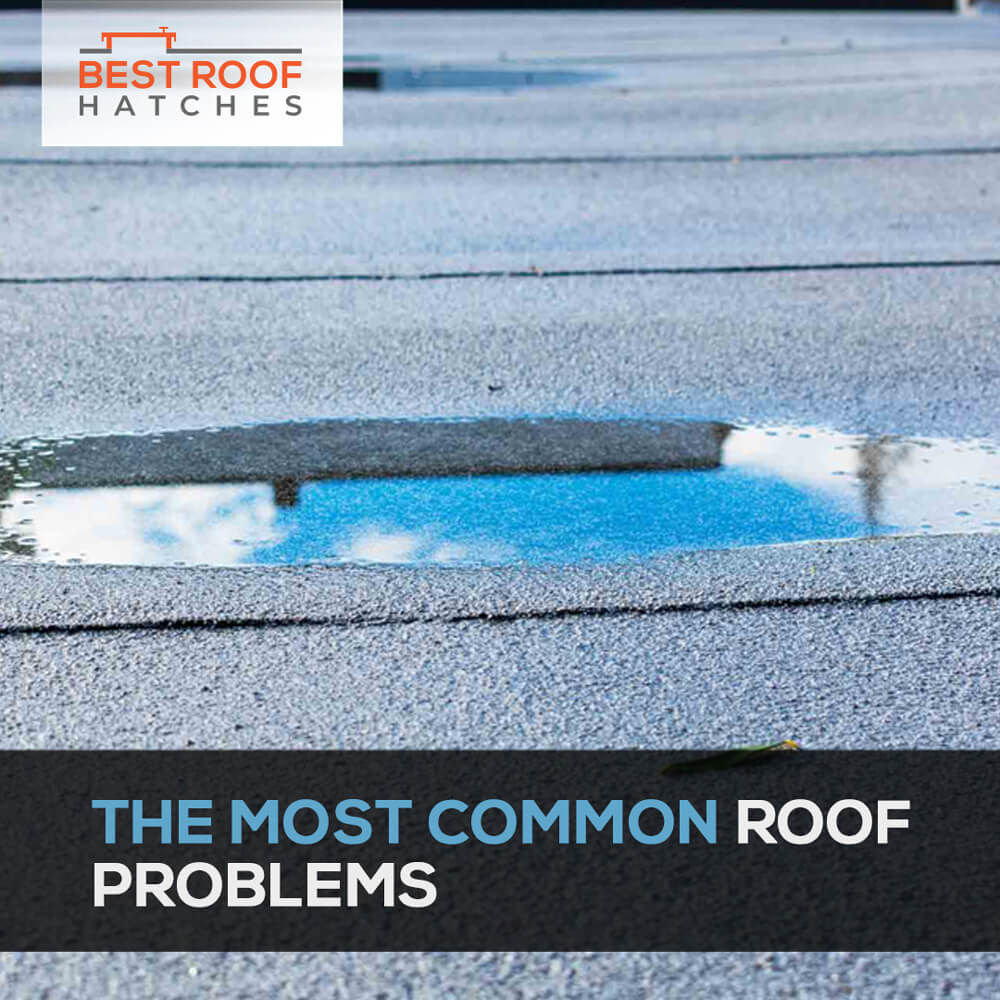Share this
The Most Common Roof Problems
Posted by Best Roof Hatches on 2021 Apr 7th
One of the parts of a commercial building that owners do not pay much attention to is its roof. Neglecting it permanently or not giving it immediate attention can lead to damage and expensive repairs. Whether the roof problem is big or small does not matter-- the best solution is to address and fix it immediately. Moreover, it would be best to anticipate roof issues in the future because they become inevitable in all types of commercial buildings as time passes.
The perfect way to avoid roof problems is to know and understand the typical and significant issues in any building. Ready your notes because you may want to check your building roof for any presence of possible common roof issues that you will find in this article.
1. Improper installation and repair. A roof with many issues may be the result of improper installation. It may not be immediately noticeable, but improper construction of the building's roof can have a long-term effect, such as becoming the source of other issues. To avoid this, you should always make sure that the contractor who will handle it is experienced and professional.
2. Lack of maintenance. Regardless of how well the roof installation was, lack of proper and regular care can still kill the roof and break the bank when you have to have repairs. Aside from the high costs that you might incur, it could also result in complaints from the building occupants or tenants. However, with proper maintenance from professionals, your roof will last longer, and you will be able to avoid expensive repairs should problems escalate in the future.
3. Wrong Roof Materials and Improper Repair. An improper repair can result in permanent damage to the roof. Moreover, misuse of roofing materials can also pose a significant problem. For example, some commercial buildings require a PVC roof, such as restaurants, because they are resistant to grease and animal fats. If the materials used for this type of structure are not appropriate for the required roof, there is a high chance that the roof won't last long.
4. Watch out for the blow-offs. Correct application ofthe roofing materials is essential to avoid the roof getting wrecked by blow-offs. Blow-offs occur when the wind hits the side of your building and continuously gusts upwards. Consequently, the space between the roof and the moving air creates suction. The weak part of the roof will be removed and blown away when this suction pulls it.
5. Roof materials tend to shrink. The materials used on the roof can shrink. Take, for instance, metal. It can contract and expand due to cold and heat. As the metal expands and contracts, its joints break down, and the hole extends, increasing the possibility of water passing through them. The same can also be said in almost all roof materials and not just for metal roofs.
6. Punctures. Many elements, objects, and instances can cause roof punctures, such as hail, wind, and foot traffic. In single-ply roofing systems, a common source of punctures is foot traffic. When a person frequently walks on the roof, it damages the roof membranes. You don't want tiny punctures to become bigger holes that would make you deal with leaks inside the building. Hence, you should make sure to watch out for punctures in your roofs and have them covered up immediately.
7. Roof leaks. Leaks are one of the usual roof issues. When any liquid or moisture enters through the roof, it may cause molding, dripping water, musty odors, puddles, and stains on the wall and ceilings. Aside from water, ice, snow, wind, hail, and other debris can also enter the holes in the roof.
8. Ponding waters. Watershed funds standing for more than 48 hours are classified as "undesirable" by the National Roofing Contractors Association (NRCA). The concern, especially in the roofing industry, is that the 1-inch deep pond is equivalent to 5.2lbs per square foot. Such weight, especially when accumulated on the roof, can affect the building's structural integrity, resulting in the roof's collapse. Ponding waters are typical in commercial buildings with flat roofs and some with poor installation and design.
Conclusion
Remember that prevention is the best method to avoid the common issues of commercial building roofs. Address the problem while it's still significantly small. And at least once a year, consult your maintenance contractor for regular inspection and maintenance of your commercial building.
Moreover, you will need to provide safe and easy access all the time to maintenance personnel who do the maintenance and repairs of your roof. There are several methods to make sure they can safely gain access to the roof, like installing Railings. These safety rails are relevant accessories, especially when there's frequent access to the roof. If you're planning to get one, get it from Best Roof Hatches! Visit Best Roof Hatches today or call now at 1-800-431-8651.

